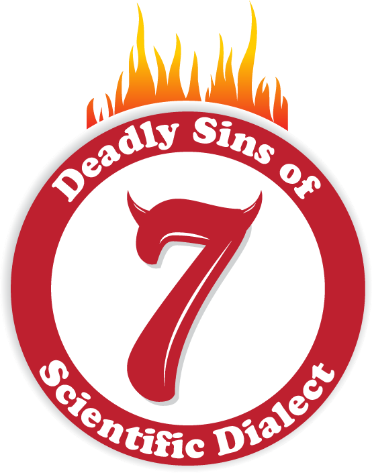Another Deadly Sins Recap, Part 2

Writing Tip Wednesdays is ending 2024 the way we started it: with the Deadly Sins.
This series was written by Writing Tip Wednesday reader Rick Hull. Rick has been a health communications specialist with the National Center for Chronic Disease Prevention and Health Promotion’s (NCCDPHP’s) Office of the Director for 36 years, many of them as a writer-editor. He is NCCDPHP’s clearance coordinator and branding ambassador, CDC’s logo-licensing and co-branding coordinator, and a reviewer in CDC’s system logos clearance.
His favorite quotation is “Great ideas are hogwash. Style and structure are the essence of great writing.” —Vladimir Nabokov, Lectures on Literature
Did you think there were really only seven deadly sins of scientific writing plus a wrap-up and one extra? Wrong! There are more. Here’s Rick Hull on “that or which?”
Misuse of “that” and “which” is a common but easily avoided grammar error. Before I try to distinguish between the two, let me first answer the inevitable “who cares?” question. Jefferson D. Bates, the author of “Writing with Precision: How to Write So That You Cannot Possibly be Misunderstood,” has this to say on the subject:
Much confusion exists concerning the proper usage of these . . . relative pronouns. It isn’t any wonder. Many grammars are quite vague on the subject, or don’t bring it up at all. And many topflight writers do not observe the distinctions. In that case, why bother? Simply because the distinctions can be extremely useful if you’re concerned with making your writing more precise.
As scientific writers, you surely want to be precise. One way to achieve precision is to observe a fine old rule of grammar that marks the distinction between restrictive and nonrestrictive clauses.
A restrictive clause explicitly identifies or limits an object or thought. Simply ask yourself whether the information in the clause is necessary for understanding the clause it modifies. If necessary, the clause is considered restrictive. Such clauses are introduced by “that” and take no comma to join them to the main clause.
A nonrestrictive clause, on the other hand, provides information that is helpful or interesting—but not really essential—for grasping what the main clause is referring to. Nonrestrictive clauses are introduced by “which” and are separated from the main clause by a comma.
The handiest example I can come up with is the difference between giving a visitor directions to a specific grocery store. For a small town, you could probably just say, “Go to the grocery store, which is on Vine Street.” Assuming that the town only has one grocery, the which clause is helpful (it will save time for the person you’ve just spoken to) but not essential (the person could just find Vine Street and then look for the grocery store, and that will be the right grocery store). But if you’re giving this direction in a large city, you’d definitely have to say, “Go to the grocery store that is on Vine Street.” (One can only hope that Vine Street has only one grocery store.)